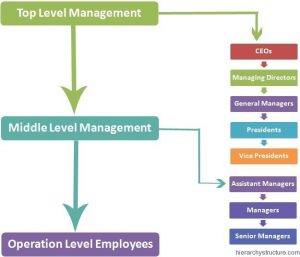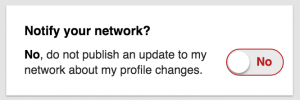How you can retire redundant or underutilized tools for a more effective martech stack without operational chaos.
Regularly auditing your martech stack must be part of your organization’s process. During an audit, you will likely identify a handful of tools that can be retired for various reasons.
Perhaps your company has undergone a merger or acquisition, and you have duplicate tools that perform the same function. Maybe other tools in your stack might have added functionality, making a tool redundant. Or the tool just is not utilized enough to justify the cost.
Whatever the reason, identifying what tools can be retired is a critical part of a martech audit. But what happens after you’ve made that decision? How do you retire a tool without causing an uproar among users or breaking automations?
Retiring martech software requires a thorough planning process and clean execution. Here are five steps to follow.
Step 1: Identify system integrations and process dependencies
To avoid disrupting your operations, it is critical to identify what other systems and processes depend on the tool you are planning to retire. If you work for a large organization and the tool has been in place for many years, this may be more difficult than it seems. If your organization hasn’t been thorough about documentation, other systems may use API calls or data exports from the tool without you knowing it.
Even more challenging than identifying systemic integrations is specifying manual processes that exist outside the tool but are dependent on it. For example, a report gets sent out of the tool that a different team is manually copying/pasting into another system. These types of manual workarounds happen more often than you might think.
Start talking to everyone and anyone in the organization who has a connection to the tool. If possible, find the individuals involved in the tool’s initial implementation. They may have the institutional knowledge you’ll need to understand the downstream impacts of the tool’s retirement fully.
Step 2: Assess data migration needs
You may need to account for significant data migration as part of the retirement process. Heavily regulated industries such as financial services or healthcare have mandatory data retention periods (sometimes as long as seven years!).
Document what data needs to be migrated and determine where that data needs to go. If you are moving from one similar platform to another, for example, a marketing automation system, you may migrate the data from your old tool into the new one. Ask your new vendor how other clients have handled their data migration needs. They may be able to offer professional services or point your IT team to solid documentation for best practices they have seen with other clients.
But what happens if you are retiring a tool and not going to replace it? Where should that data go? Work with your IT partners to devise a plan. The data may be stored on a SharePoint site or in a new database. The best solution will consider how accessible that data needs to be and who needs to access it.
If the data only needs to be accessed rarely, it may be sufficient to store it in a database that someone on the technology team can extract once in a blue moon. However, if non-technical users, such as marketers or salespeople, need to access the historical data regularly, you will need a more user-friendly solution.
Step 3: Identify the right time to retire and build a project plan
After assessing your martech stack, you must identify the right time to retire the tool. This could be based on several factors, such as the end of a contract, the completion of a project or the end of a fiscal year. Whatever the reason, ensure that the timing will not disrupt your operations.
Once you’ve set the target retirement date, it’s time to build your project plan. Considering all of the downstream systems impacted and the data migration needs from Steps 1 and 2. You should have all the information you need to build a project plan working backward from your target retirement date.
What happens if the project work to decouple systems or migrate data will push you past your target date? If your target date was based on a contract, negotiate with the vendor to see if you can extend the contract month-to-month to give you the time you need to fully execute your plan rather than get locked into a full-year renewal.
Step 4: Develop a communication plan
Communication is vital when retiring a martech tool. Identify everyone who needs to be looped in, such as employees, agency partners and sometimes external customers. Give them sufficient notice and be transparent about the reasons for retiring the tool. You should also communicate your plan for migrating data to a new tool and what support will be available during the transition.
If you are retiring one tool and replacing it with another, focus your communications on the benefits the new tool provides. Share the training plan so that users know they will be given support to help them learn the new tool.
Try and have the tools overlap for a specific period so that users are given a soft landing where they can start to learn the new tool while still having the safety net of doing things the old way if they are on a hard deadline and struggling with the new tool.
When retiring a tool that will not be replaced, talk to users to understand the features and functionality they depend on and work to build a plan that addresses how those needs can be met through other tools or processes.
Step 5: Retire the martech tool and sell the wins
Once you have migrated your data from your old tool and trained employees on using a new one, it is time for retirement. The period after the tool is retired is crucial for communication. Be sure to communicate to stakeholders the “wins” from retirement.
What’s the adoption rate of users for the new tool? What sales wins or positive client experience feedback have you heard about the new tool? How many days has it been since the tool was retired that there have been no errors or disruptions to operations? What new investments have been made with the cost savings from retiring the tool?
These are all key questions that can be used as a jumping-off point to remind stakeholders of why the tool was retired in the first place.
Retiring old tools for a more effective martech stack
Studies have shown that marketing organizations use as many as 91 marketing cloud services, and the bloat in tools can drag down productivity. For many marketers, “less is more” and retiring duplicative or underutilized tools can be a team’s secret weapon.
When done properly with a strong plan, retiring solutions will result in a leaner, cheaper and more effective martech stack.
The post A 5-step guide to retiring martech tools without disrupting operations appeared first on MarTech.
MarTech(10)





